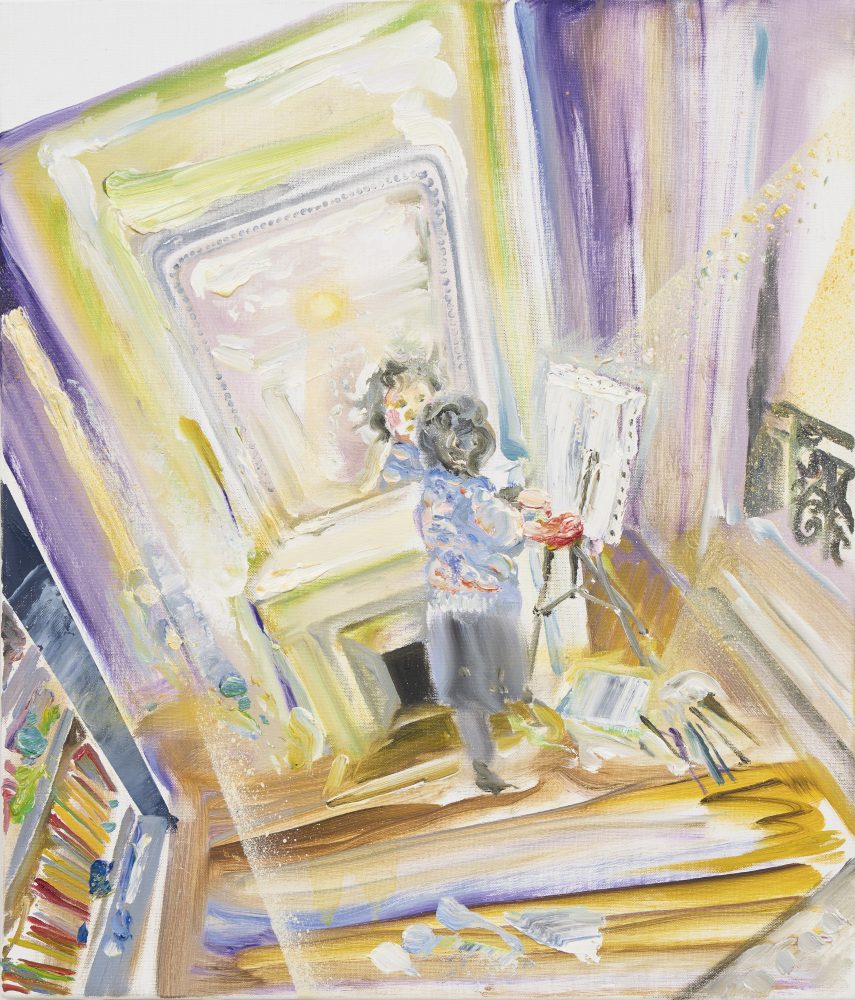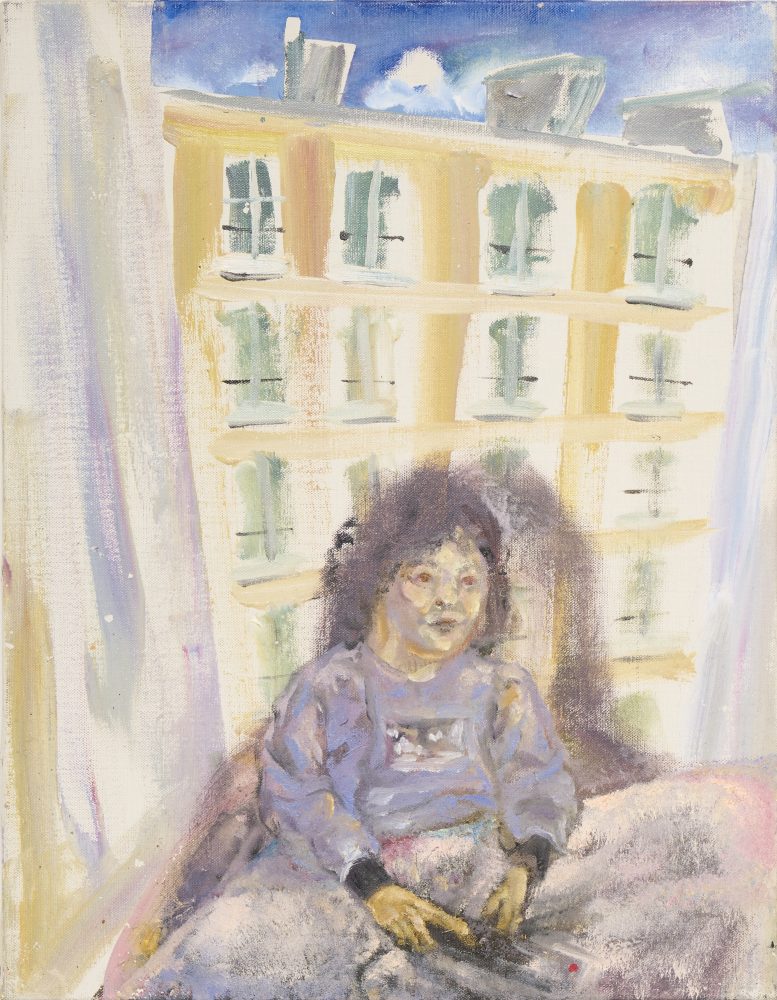
Erina Matsui
Solo Exhibition
Astral Dreamer
2024.7.20 (Sat.) − 9.7 (Sat.)
Opening hours:12:00 – 18:00
Closed on Sundays, Mondays, and holidays
*The gallery will be closed from 11 August (Sun.) to 19 August (Mon.)
*In conjunction with Toeko Tatsuno Solo Exhibition
Opening reception: 20 July (Sat.), 2024, 17:00 – 19:00
*Artist will attend the reception
Talk event: 20 July (Sat.), 2024, 16:00 – 17:30
Speakers: Erina Matsui and Mihoko Nishikawa (Curator, Museum of Contemporary Art Tokyo)
*Japanese only

Photo: Osamu Sakamoto
We at ANOMALY are pleased to announce the upcoming solo exhibition of works by the artist Erina Matsui. Titled Astral Dreamer, the exhibition will run from July 20 (Sat.) to September 7 (Sat), 2024.
Renowned for her hengao (silly-faced) self-portraits, Matsui has deepened her thinking on self-portraits and their history, and the roots of her own works. She remains in vigorous action producing and showing works. At this year’s Children’s Paintings Exhibition held at the Ichihara Lakeside Museum, she participated as a guest artist and showed new works alongside paintings by children.
To Matsui, paintings have been places for freely building utopias that could not be achieved in reality. They have been means of depicting large-scale worlds, such as spectacular space in the universe as contrasted with her everyday self. She was heavily influenced by manga and anime, and was particularly drawn to girls’ manga such as The Rose of Versailles and Sally the Witch that she encountered in her childhood. She says she felt a particularly strong attraction to blonde heroines and trappings of Western culture. She also painted self-portraits in which she transformed herself into a protagonist of this sort that she longed to be. In many of her self-portraits, however, were hengao ones; her face wore a comical expression and was extremely deformed. Making faces was a trend that arose among youth who wanted to share their laughs and feelings with others using their own comicality as material. Born in the 1980s, Matsui embodied this trend on canvas, and thereby caused a sensation in the world of painting.

Photo: Osamu Sakamoto
In recent years, Matsui produced works in Paris, under an overseas seminar program. In the process, she rethought the question of what to paint and what not to paint, and came to focus on the unlimited space spreading precisely because it was not drawn. She distanced herself from the realism that connected with the “skillfulness” of her hengao paintings, and began painting self-portraits from a nested perspective (in which she painted herself looking at herself in a mirror, viewed from the ceiling). Similarly, instead of idealized versions of herself as the heroine of a girl’s manga, she painted the reality of herself as soon as she rises from bed in her beloved Paris, her hair in disarray (but wearing a sweatshirt from the Louvre). She began making paintings with a bird’s-eye view.

Photo: Osamu Sakamoto
No doubt everyone has the experience of despair at their appearance reflected on the iPad screen the instant it suddenly goes black or of disappointment at the huge gulf between the self-image in the brain and the reflection in the window when the train abruptly enters a tunnel. The gap between the self of the present that is slowly aging and the anime-type self in the brain may be extremely great in Matsui’s case.
“I have been painting self-portraits for 20 years. Every time I turn a year older, I feel the gap between myself and the girlhood within me widening.”
“When I muttered that I want to go to Paris, it is definitely a time when I want to escape from something before my eyes. The little girl in me leaves my body, departs from my house in the bustling district of Ikebukuro, takes off from Japan, crosses the ocean, passes through the skies of Finland, and heads for Paris.”
“In an old sweat shirt and leggings that I wore around the house giving me an appearance that was undoubtedly not attuned to city, I strolled around an imaginary Paris that was a utopia crystallizing my visions from childhood.”
“While walking around the beautiful streets under the bright sun, I noticed that walking on the shady side as opposed to the sunny side made for a pleasant view of the shining scenery, and better suited my temperament. As I mused about such things, I remembered the great flavor of the miso soup I would eat at Narita Airport upon my return to Japan. This quickly filled the gulf in my consciousness, and I returned to my ordinary, everyday life.”
– Erina Matsui
Through her previous self-portraits, Matsui has asked viewers to consider whether these days, with the glut of communication on the Internet, people were building a world of blanks where they could hide their own faces. She has presented the infinite vastness and possibilities of the space of the universe, commenting that faces convey all kinds of information merely by moving the facial muscles just one millimeter. At this exhibition, in contrast, she is showing works setting forth a world that arises from not being painted and exploring the perspectives of others.
The term “astral dreamer,” the title of this exhibition, is close to “astral trip.” It is a coinage referring to the variety of selves we encounter in dreams (and sometimes in the nightmare that goes by the name “reality”).
Born in 1984 in Okayama Prefecture, Erina Matsui graduated from Tama Art University and went on to receive a master’s degree in oil painting from the University of the Arts, Tokyo. In 2004, she made her debut as a professional artist by winning the Golden Prize in the GEISAI6 competition. Major solo exhibitions of her works have been held at the Museum of the Foundation Joan Miró (2007), Ohara Museum (2012), Kirishima Open-Air Museum (2016), and Okayama Prefectural Museum of Art (2020). She has participated in group exhibitions held at venues such as the Foundation Cartier (2005), Takamatsu Art Museum (2014), Okayama Prefectural Museum of Art (2019), and Tokyo National Museum (now under way and running until July 28, 2024).













